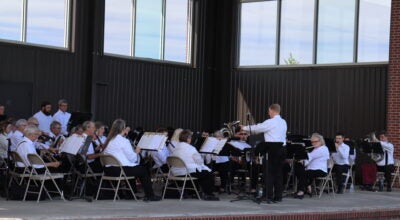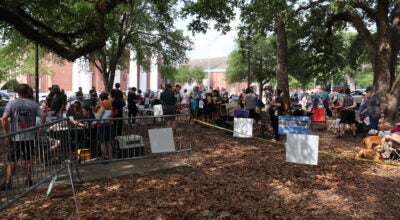Ready, Set, Grow! Plants for Hummingbirds
Published 1:34 pm Sunday, June 13, 2021
By André Brock
I had an overwhelming response from readers and fans last month for my hummingbird article. …Okay, my Parrain and a couple of friends said they read it and liked it. Still, I assume lots of readers out there were interested in finding out more information on plants we can grow to attract and feed hummingbirds. For those of you who spent the last month waiting for the exciting follow-up, here you go.
There are hundreds or more plants available to us that will attract hummingbirds. Besides providing nectar, which we imitate in feeders, these attract insects the birds may eat as well as needed shelter. Plants with red, preferably tubular, flowers will just about all attract hummingbirds. But they like other colors and shapes too. Here’s a good sampling of what to grow and how:
- Hyacinth bean (Lablab purpureus) is a vine we usually grow as an annual that can grow up to 20 feet long. The vines are purple and the leaves typically have a purple-ish tinge. The flowers? Yep, also purple. Native to Africa and Asia, it’s very drought-tolerant but also tolerates “wet feet.” It will want support so give it a fence or trellis where it tends to grow up and out. As a legume, it requires no nitrogen fertilizer. And the immature pods are apparently edible (cooked), though I’ve never tried them myself so I won’t offer recipes.
- Trumpet vine (Campsis radicans) is another vine but one I don’t grow on purpose. It has tubular red-orange flowers on vines that grow up to 40 feet. That’s why I don’t plant them – they take up a lot of space and can be aggressive growers. But this North American native has zero pest problems and can look nice if you have the space. Runners may pop up in the yard so it’s best on a wooded edge where it can climb trees and not annoy you.
- Angel Earrings (Fuchsia spp.; actually a brand name by Suntory) are perennial plants that usually survive our winters, especially if mulched in cold weather. Long stems have dark green foliage with pendulous, intricate flowers. With hybrids and varieties, you can find them in shades of pink to white growing a couple of feet wide and just over a foot tall. My favorites have pink four-lobed skirts with purple centers. The pendulous habit does not climb well but they look great in hanging baskets or as “spillers” in combination displays. They like morning sun with afternoon shade, or dappled shade/sun. They can be propagated by cuttings but don’t sell them or you’ll get in legal trouble.
- Maypop / passion flower (Passiflora incarnata) is another native, though some man-made crosses have been developed. The natives have delicate, complex flowers with purple and white lines. Crosses can be almost white, red, or darker purple. There is symbolism in the details of the flower that are said to reflect Jesus’ passion and crucifixion, hence the scientific name.
- Coral honeysuckle (Lonicera sempervirens) looks like what you’d expect to attract hummingbirds. It has tubular red flowers that grow on climbing vines with deep green foliage. Native to North America, it has few to no pest problems. It propagates easily from cuttings too, so buy one and make your own copies.
The list of hummingbird-attracting plants goes on and on but I’m running out of space. You might check out onlineplantguide.com for more ideas. Also BTNEP (Barataria-Terrebonne National Estuary Program) has a good poster with some Louisiana natives you might like.
If you want to know more about gardening, landscaping, or anything else horticultural, contact the St. John & St. James Parishes County Agent André Brock at abrock@agcenter.lsu.edu. Also, the LSU Ag Center’s website can be accessed at www.lsuagcenter.com with lots of user-friendly information, including this article.





